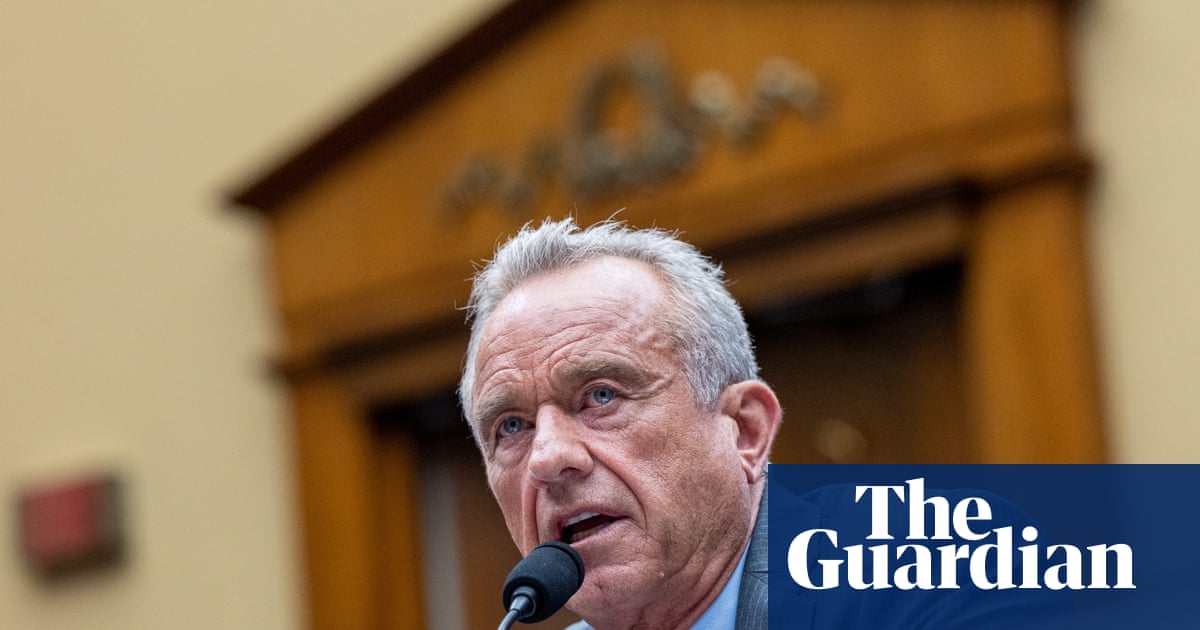You may have seen an eye-opening statement recently from the Trump White House crowing about its success in pushing up "blue-collar wage growth."
The statement was headlined: "Blue-Collar Wage Growth Sees Largest Increase in Nearly 60 Years Under Trump." It purported to track real wages for hourly workers during Trump's first five months in office, and compared that figure to the first five months in office of Trump's predecessors.
"We’re just getting started with pro-growth, pro-prosperity policies that finally put America First," the White House boasted.
A really strong economy was handed off to the Trump administration, and so far, it has mostly held.
Josh Bivens, Economic Policy Institute
There are enough questions about how the White House arrived at this conclusion, and why anyone should trust it, to mark it as a sterling demonstration of how to employ cherry-picking to lie with statistics.
In conjunction with the announcement, Treasury Secretary Scott Bessent gave a preening interview to the New York Post, a Trump-friendly daily that repeated the claim without examination. He also appeared on a New York Post podcast to promote the administration's purportedly near-record-setting achievement.
Bessent didn't disclose the administration's methodology, or explain what the first five months of a presidential term was supposed to reveal, so I had to parse the data myself, with the crucial assistance of some professional economists. More on that in a moment.
The basis for Trump's claim is a government statistic tracking inflation-adjusted hourly earnings for production and nonsupervisory employees in the private sector, pegged to prices in 1982-1984.
The workers tend to be rank-and-file employees, though economic analysts Philippa Dunne and Doug Henwood of TLRAnalytics note that it's a stretch to call them "blue-collar." The term customarily applies to laborers, not "bartenders, teachers, or retail workers" whose earnings are also tracked by the statistic.
Read more: Hiltzik: Confused about Trump's tariff policy? Join the club.
Trump cited wage growth from Jan. 1 through May 31 this year. As it happens, however, Trump wasn't president for that entire period; he took office on Jan. 20, so at least some of his claim covered the last three weeks of the Biden administration.
In other words, some of what Trump bragged about was the work of Biden — the strength of whose economy spilled over into Trump's term. (Trumpworld hasn't been shy about blaming Biden for economic problems that have bubbled up over the last few months, so it's a bit churlish of him to deny Biden credit for this.)
Indeed, one important question related to Trump's claim goes to what he has actually done that would produce wage gains on this scale. The answer is: nothing. The likelihood is that whatever phenomenon is measurable at this point in the year reflects the Biden economy.
"A really strong economy was handed off to the Trump administration," says Josh Bivens, chief economist at the labor-affiliated Economic Policy Institute, "and so far, it has mostly held."
In the New York Post podcast, Bessent attributed the purported wage gains to Trump's "emphasis on manufacturing," along with "12 or 20 million illegal aliens coming out of the workforce."
In neither category, however, have Trump policies actually achieved anything solid. Manufacturing output, as measured by the Federal Reserve, fell in three of the first five months of this year, following a powerful gain in December, the last full month of the Biden administration. As of May, U.S. manufacturing is operating at a slightly lower percent of capacity than it was in December.
The Bureau of Labor Statistics says that manufacturing employment fell by 8,000 in May, by 2,000 over the three months ending in May, and by 9,000 over the six months ending in May. If there's a renaissance in manufacturing jobs attributable to Trump industrial policy, it's not visible in the official numbers.
Bessent's statement about the millions of "illegal aliens" coming out of the workforce is especially chimerical. Authoritative estimates place the total of undocumented residents in the U.S. at about 11 million to 11.7 million. Unless Bessent thinks that every one of them is no longer in the workforce, he misspoke. (I am being charitable).
Immigration and Customs Enforcement itself claims to have deported 65,000 immigrants in the first 100 days of Trump's term, ended April 29. To assert that taking those individuals out of the workforce was enough to have triggered a surge in hourly wages for legal residents is absurd.
That's especially so because many undocumented workers take jobs that employers find difficult, if not impossible, to fill from among legal residents.
Annualized five-month wage growth has been stronger in 12 of the last 32 months — including a long period during Biden's term — than in Trump's first five months (circled). (Josh Bivens, Economic Policy Institute)
As Amy Taxin and Dorany Pineda of the Associated Press reported, in some parts of California's agricultural belt as many as 45% of farmworkers have stopped coming to work since federal agents launched sweeping raids on farms and other locations employing immigrants. The construction industry also has suffered from a dwindling supply of immigrant workers, with few legally present workers available to replace them.
A fundamental question about the White House claim is why it chose to measure itself against the first five months of previous administrations. Why not the first five months of all presidential terms? Or any other five-month period?
I asked the White House and Treasury Department to comment on the administration's statistic. I got no answer from the White House and nothing on the record from Treasury.
The time frame cited by the White House is curiously selective. The historical comparison to the first five months of one-term presidents and the first terms of two-term presidents doesn't apply to Trump: "This is Trump’s second term, so he’s not really a member of this club," observe Dunne and Henwood.
They note, further, that the five-month annualized gain in worker wages is "a silly metric." The statistic is notoriously volatile, and averaging such a short period only exacerbates its ephemerality.
Judging from five-month annualized averages over time, moreover, "Trump’s 1.7% is high, but not eye-popping," Dunne and Henwood told me.
They're right. Going back to October 2022, the five-month average was higher than Trump's in 12 of the last 32 months. That includes five months of Biden's term — July through October 2024. The highest annualized five-month gain in real average hourly wages was recorded in September 2024, when it reached about 3.2%.
What makes the question especially pertinent is that, with a few notable exceptions, little of significance happens in the first five months of a new presidential term. It takes time for newly-elected presidents to assemble their cabinet, cue up a legislative program, address the problems — or coast on the economic health — bequeathed them by their predecessors.
Obama's first term was consumed with undoing the damage of the Great Recession, which was a product largely of Republican economic policymaking. During his term, Biden had to deal with the consequences of the COVID pandemic.
It's proper to recognize that even assembling the statistics that the Trump administration decided to torture for its news release may become more difficult in the future. That's because Trump is taking a hatchet to the government's economic data infrastructure.
Several datasets have been deleted from federal websites. Budget cuts and mass firings will hobble data collection, and expert advisory committees serving the Census Bureau, BLS and Bureau of Economic Analysis have been disbanded. The result of these and other assaults, wrote Jed Kolko, a former undersecretary for economic affairs at the Commerce Department overseeing data operations at the Census Bureau and BEA, will include the destruction of trust in U.S. economic data.
"Governments hide or manipulate the numbers only when they’re bad, as Argentina did with inflation, Greece with public finances, and China with its youth unemployment rate," Kolko wrote.
The consequences will extend beyond government agencies. "In the private sector, businesses use federal statistics for investment and marketing decisions," Kolko added. "Official statistics on population growth, housing conditions, local demographics, and local spending patterns drive decisions about where to build factories, open stores, locate jobs, and construct housing. ... Financial markets trade on macroeconomic releases, and investors rely on clear, confident signals from the Federal Reserve, which itself depends on trustworthy economic data."
Trump may not realize that he's playing with fire by crowing about what could be an ephemeral gain in an obscure statistic. Many economists expect the initiatives he is pursuing to produce a slowdown in economic growth, or even a recession. Corporate executives' uncertainties about Trump's tariff policies have already stifled industrial planning, including decisions about when and where to build new factories.
That won't be positive for wage growth, obviously. Do Trump or Bessent care? One would hope so, but the evidence that they do hasn't appeared anywhere but in this White House news release. If things turn sour, what will they have to brag about?
Get the latest from Michael Hiltzik
Commentary on economics and more from a Pulitzer Prize winner.
Sign me up.
This story originally appeared in Los Angeles Times.

 German (DE)
German (DE)  English (US)
English (US)  Spanish (ES)
Spanish (ES)  French (FR)
French (FR)  Hindi (IN)
Hindi (IN)  Italian (IT)
Italian (IT)  Russian (RU)
Russian (RU) 
























Comments